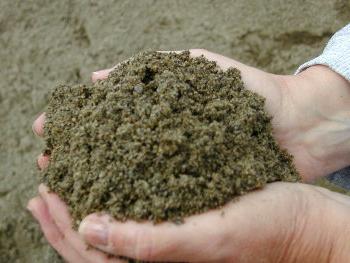The bulk density of a material is the ratio of the mass of this substance in a freshly sprinkled state to its volume. In this case, both the volume of the substance itself and the volume of voids inside it and the volume between individual particles (for example, in coal) are taken into account. For obvious reasons, this type of density is less than the true density, which excludes the above voids.
To determine the bulk density, tools such as scales, a ruler, a standard funnel device, and a measuring vessel of a certain volume are used. The bulk density of a substance is determined for a material of a certain moisture content. If the sample does not meet humidity standards, then it is moistened or, more often, dried.
When we determine what the bulk density of sand is, the algorithm of actions should be like this:
1. The measuring vessel is weighed and installed under a standard funnel (it has a shutter from below).
2. Sand is poured into the funnel, after which the shutter opens so that the sand spills out into the measuring vessel at once, fills it and forms a hill from above.
3. Excess sand is "cut off" by a ruler by movement along the top of the measuring vessel.
4. The vessel with sand is weighed, the weight of the vessel itself is deducted from the total mass.
5. The bulk density is calculated.
6. The experiment is repeated 2-3 times, after which the average value is calculated.
In addition to density in the loose state, density is measured in a compacted version. To do this, the sand in the vessel is somewhat compacted on a vibrating platform for 0.5-1 minutes. It is possible to calculate what the bulk
density of cement is by the same method.
In accordance with GOST 10832-2009, sand of a certain type (expanded) by bulk density is divided into certain grades - from M75 (density indicator is 75 kg \ m3) to M500 (density 400-500 kg \ m3). To be assigned to a particular brand, sand must have a certain thermal conductivity and compressive strength. For example, the thermal conductivity of the M75 brand at a temperature of 25 ° C + -5 ° C should be no more than 0.043 W \ m x C. And the compressive strength for sand of the M500 brand is determined as 0.6 MPa (not less). Quartz sand (material moisture 5%) has a bulk density of 1500. For cement, this figure is about 1200 kg \ m3 in a free-filling state and about 1600 kg \ m3 in a compacted state. Often for calculations using an average figure, which is equal to 1300 kg \ cubic meter.

Why do we need bulk density? The fact is that this value is used in the trade turnover, and not the true density (for example, if sand is sold in bags). Therefore, in order to translate prices per cubic meter into prices per ton, you just need to know what the density of the material is. In addition, bulk or weight data may be needed to prepare mortars, depending on the instructions.
All product information, including density, is applied to each package by stamping, stencil or printing on the label. The manufacturer’s data, symbols, manufacturing date and batch number, amount of substance in the package and the mark of conformity are indicated here.